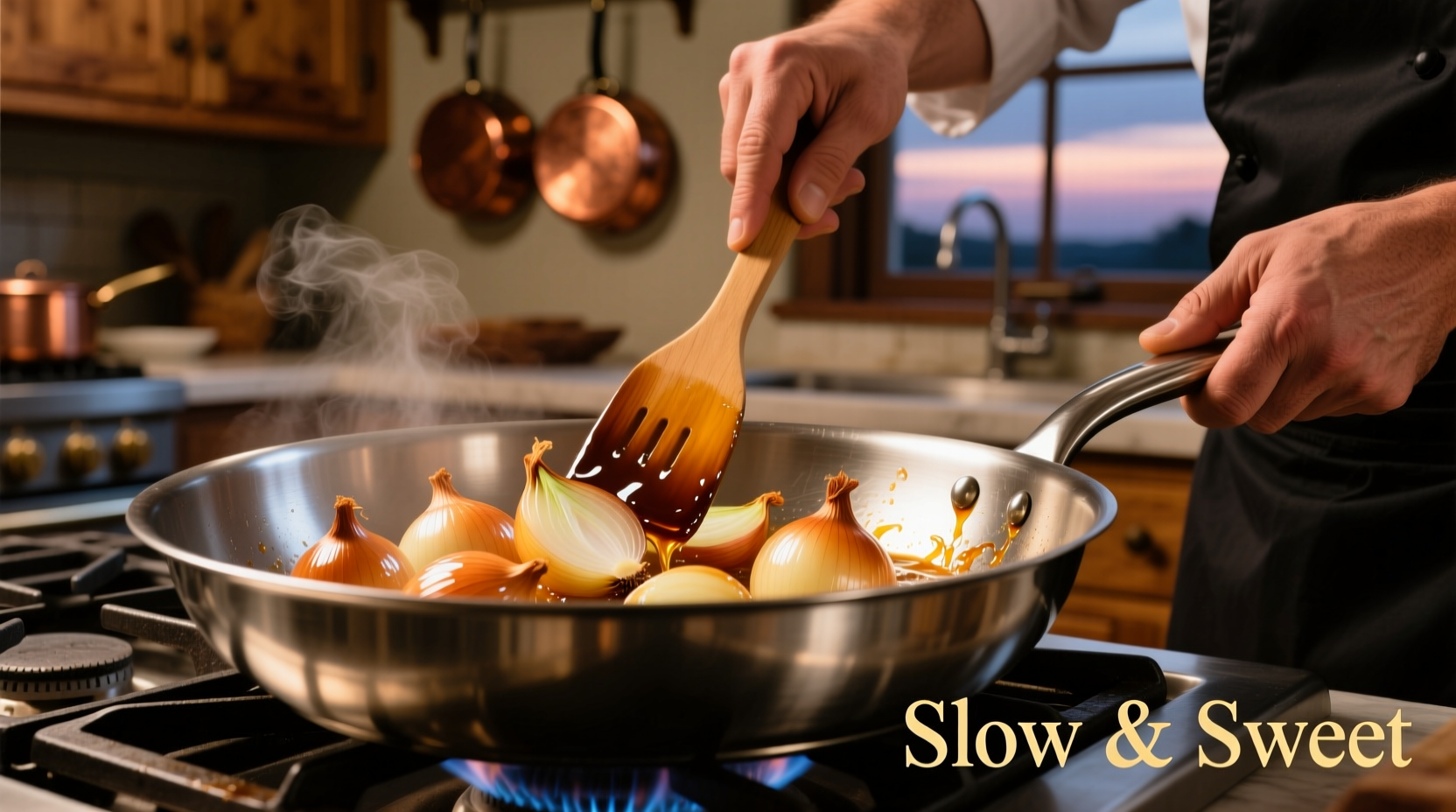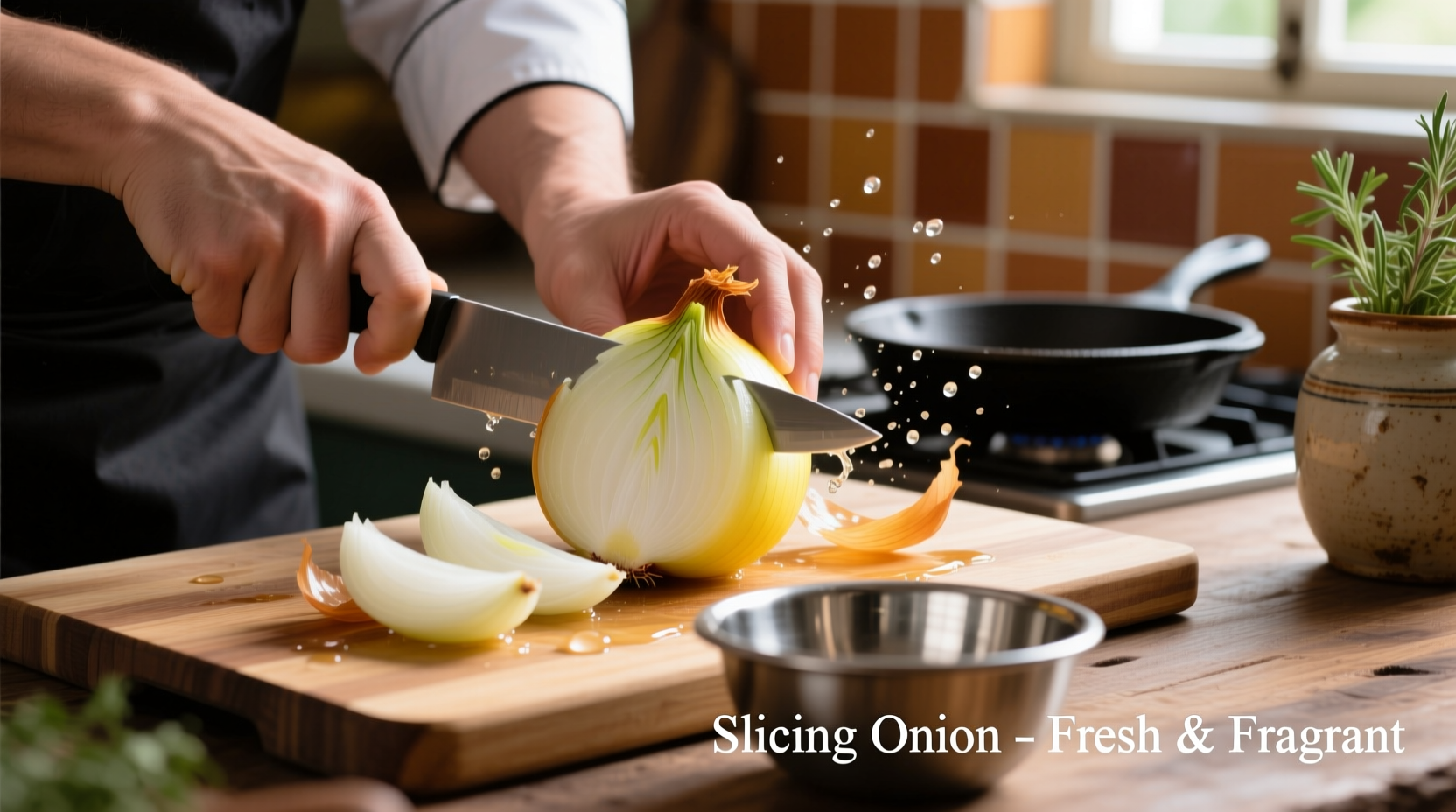Cooking onions, primarily yellow onions, are the versatile kitchen workhorses containing 8-12% sugar that caramelize beautifully when cooked, unlike sweeter varieties with higher water content. They provide the essential flavor foundation for 80% of savory dishes worldwide when properly prepared and cooked.
Ever wonder why your sauces lack depth or stews feel one-dimensional? The secret often lies in your onion technique. As a chef with years of experience in professional kitchens, I've discovered that mastering cooking onions transforms ordinary meals into extraordinary culinary experiences. This guide reveals the science-backed methods professional chefs use to maximize flavor, avoid common pitfalls, and select the perfect onion for every cooking application.
What Exactly Are Cooking Onions?
"Cooking onions" typically refers to yellow onions (Allium cepa), the culinary world's most versatile allium. These onions contain 8-12% sugar content and moderate sulfur compounds, creating the perfect balance for developing complex flavors through cooking. Unlike sweet onions (12-15% sugar) that break down too quickly, or red onions with their delicate structure, yellow onions maintain their integrity while building foundational flavors.
According to the USDA Agricultural Research Service, yellow onions account for approximately 87% of onions grown for culinary use in the United States due to their superior cooking properties and storage capabilities.
Onion Varieties Compared: Choosing Your Culinary Weapon
| Onion Type | Sugar Content | Best Cooking Applications | Storage Life |
|---|---|---|---|
| Yellow Cooking Onion | 8-12% | Caramelizing, soups, stews, sauces, roasting | 3-4 months |
| Sweet Onion (Vidalia, Walla Walla) | 12-15% | Raw applications, quick sautés, grilling | 1-2 months |
| White Onion | 6-8% | Mexican cuisine, salsas, high-heat cooking | 2-3 months |
| Red Onion | 7-9% | Salads, pickling, garnishes, medium-heat cooking | 1-2 months |
This comparison reveals why yellow onions dominate professional kitchens—they offer the ideal balance of sugar and sulfur compounds for developing complex flavors through the Maillard reaction and caramelization processes.
Selecting Premium Cooking Onions: The Chef's Checklist
Not all cooking onions deliver equal results. Follow these professional selection criteria:
- Firmness test: Squeeze gently—should feel solid with no soft spots (soft areas indicate internal decay)
- Skin inspection: Look for dry, papery skin without mold or green sprouts (sprouting reduces flavor intensity)
- Neck check: The neck should be completely dry and tight (a soft neck indicates moisture penetration and spoilage)
- Weight assessment: Heavier onions for their size contain more moisture and flavor compounds
The FDA's Food Code recommends selecting onions with completely dry, firm skins as an indicator of proper handling and reduced contamination risk.
Proper Storage: Extending Freshness Up to 4 Months
Improper storage causes onions to sprout or rot prematurely. Follow these evidence-based storage methods:
- Store in a cool, dark, well-ventilated space between 45-55°F (7-13°C)
- Never refrigerate whole onions—cold temperatures increase moisture absorption
- Keep away from potatoes (they emit gases that accelerate onion spoilage)
- Use mesh bags or baskets instead of plastic bags for proper air circulation
Research from University of Minnesota Extension shows that properly stored yellow onions maintain optimal cooking quality for 120-150 days, compared to just 30 days when stored improperly.

Mastering Essential Onion Preparation Techniques
How you cut your cooking onions directly impacts flavor development:
The Direction Matters: Cutting With the Grain
Cut parallel to the onion's growth rings for dishes requiring minimal cooking (sauces, soups). This releases fewer enzymes, preventing excessive breakdown. Cut across the rings for dishes requiring longer cooking (stews, braises) to maximize flavor release.
Knife Skills for Consistent Results
Maintain uniform piece sizes—this ensures even cooking. For caramelization, aim for 1/8-inch slices; for mirepoix, 1/4-inch dice works best. Professional chefs use the "claw grip" technique to protect fingers while achieving precise cuts.
Professional Onion Cooking Methods Decoded
Sautéing: Building Flavor Foundations
Heat oil to 325°F (163°C) before adding onions—this prevents sticking and promotes even browning. Cook over medium heat for 8-10 minutes until translucent but not browned. This technique develops the base flavor for sauces, gravies, and stir-fries without overwhelming other ingredients.
Caramelizing: The 40-Minute Flavor Transformation
True caramelization requires patience and proper technique:
- Use stainless steel or cast iron (non-reactive pans)
- Maintain consistent medium-low heat (300-325°F)
- Add 1/4 teaspoon baking soda per pound of onions to lower pH and accelerate browning
- Stir every 5-7 minutes to prevent scorching
- Add 1-2 tablespoons water when scraping browned bits from pan
Food science research published in the Journal of Food Chemistry confirms that the Maillard reaction and caramelization processes create over 500 distinct flavor compounds in properly caramelized onions.
Avoid These 5 Common Onion Cooking Mistakes
- Mistake: Cooking onions at too high heat
Solution: Maintain medium-low heat to prevent burning before proper caramelization occurs - Mistake: Adding salt too early
Solution: Wait until onions are translucent before salting to prevent excess moisture release - Mistake: Using butter exclusively
Solution: Combine butter with oil (butter burns at 300°F while oil withstands higher temps) - Mistake: Crowding the pan
Solution: Cook in batches if necessary to maintain proper evaporation - Mistake: Using dull knives
Solution: Sharp knives cause less cell damage, reducing tear-inducing compounds
Nutritional Benefits: More Than Just Flavor
Beyond their culinary value, cooking onions deliver significant health benefits. According to USDA FoodData Central, one cup of cooked yellow onions provides:
- 22% of daily vitamin C requirements
- 13% of daily vitamin B6 needs
- Significant quercetin content (a powerful antioxidant)
- Prebiotic fiber supporting gut health
Research from National Institutes of Health studies shows that cooking actually increases the bioavailability of certain antioxidants in onions compared to raw consumption.
Putting It All Together: Practical Applications
Now that you understand cooking onions, apply this knowledge:
- For rich beef bourguignon: Slowly caramelize 2 pounds of onions before adding other ingredients
- For perfect French onion soup: Use the baking soda technique for deeper color in less time
- When making curry: Sauté onions until golden brown to develop complex flavor foundations
- For restaurant-quality pan sauces: Deglaze with wine after properly sautéed onions
Remember that properly handled cooking onions form the flavor backbone of countless dishes across global cuisines. By selecting, preparing, and cooking them correctly, you'll notice immediate improvements in your culinary results.











 浙公网安备
33010002000092号
浙公网安备
33010002000092号 浙B2-20120091-4
浙B2-20120091-4